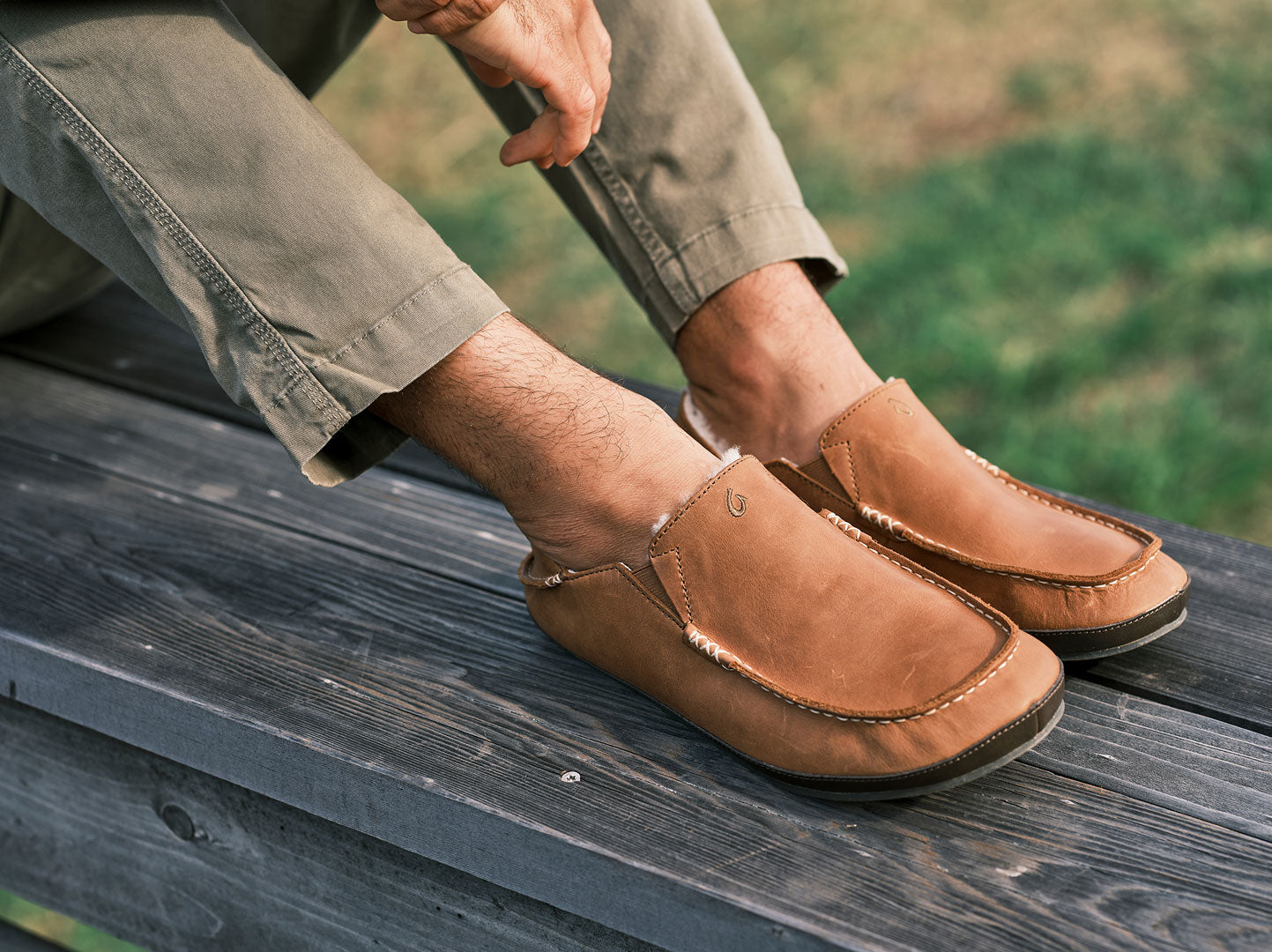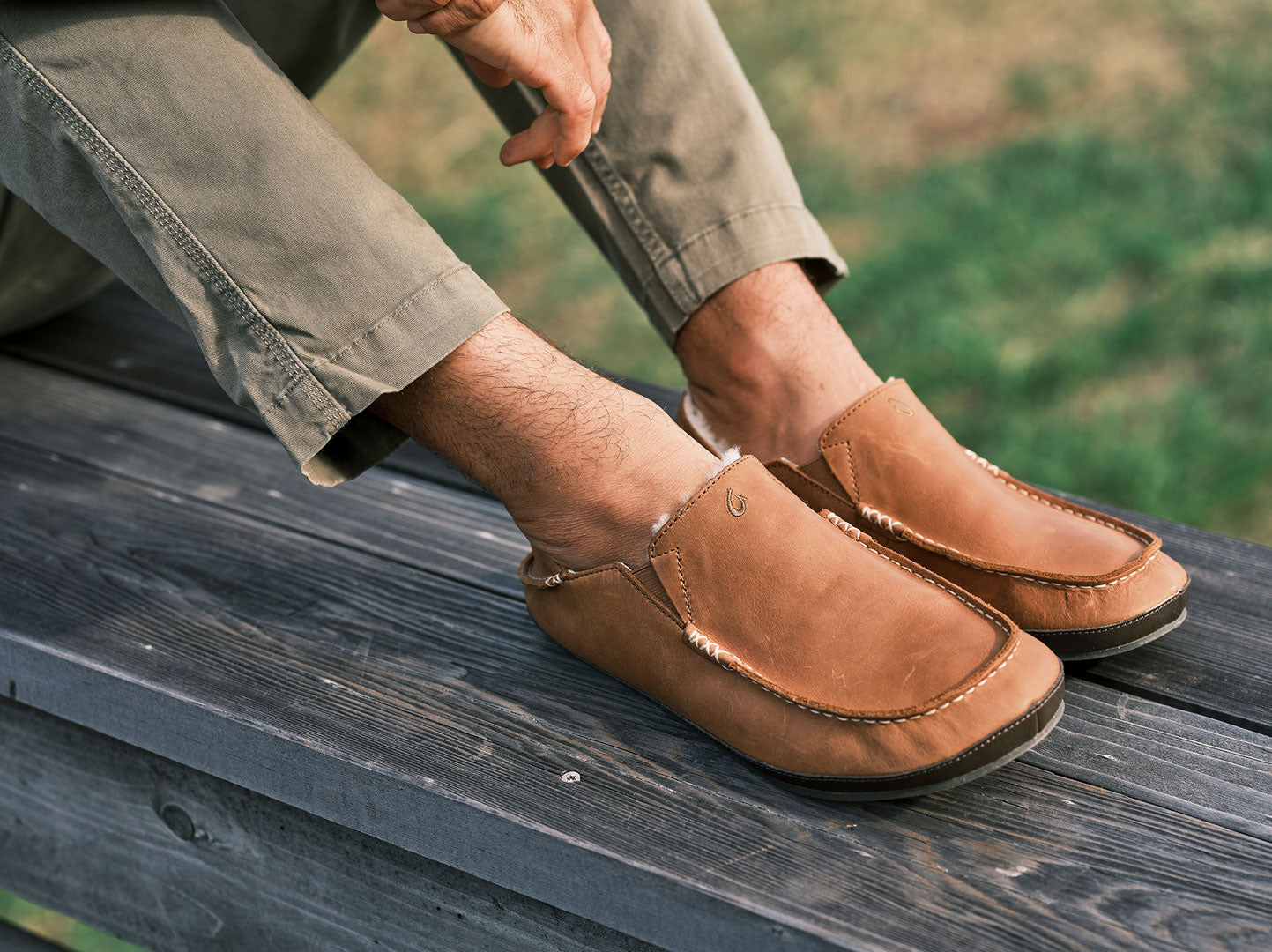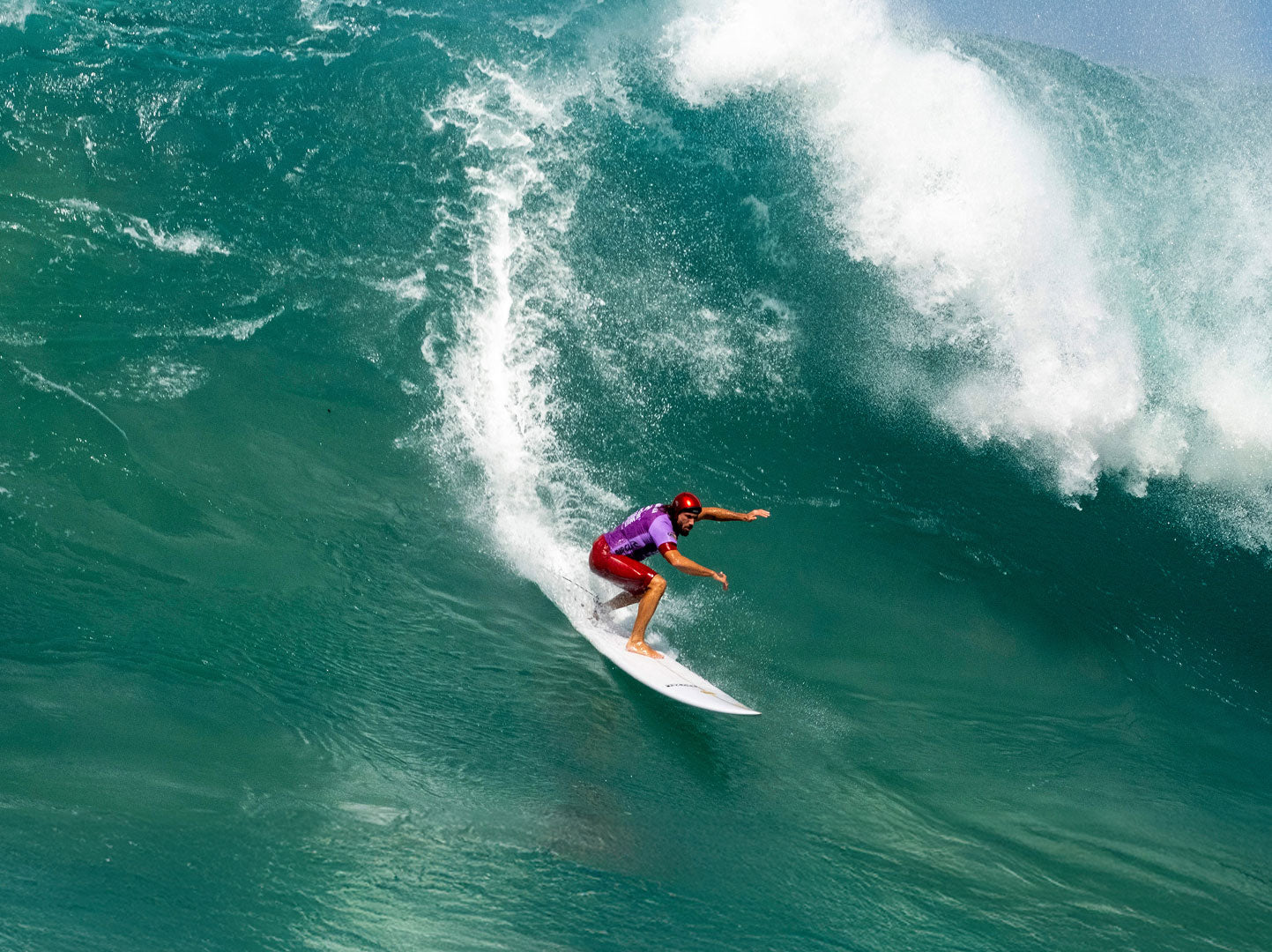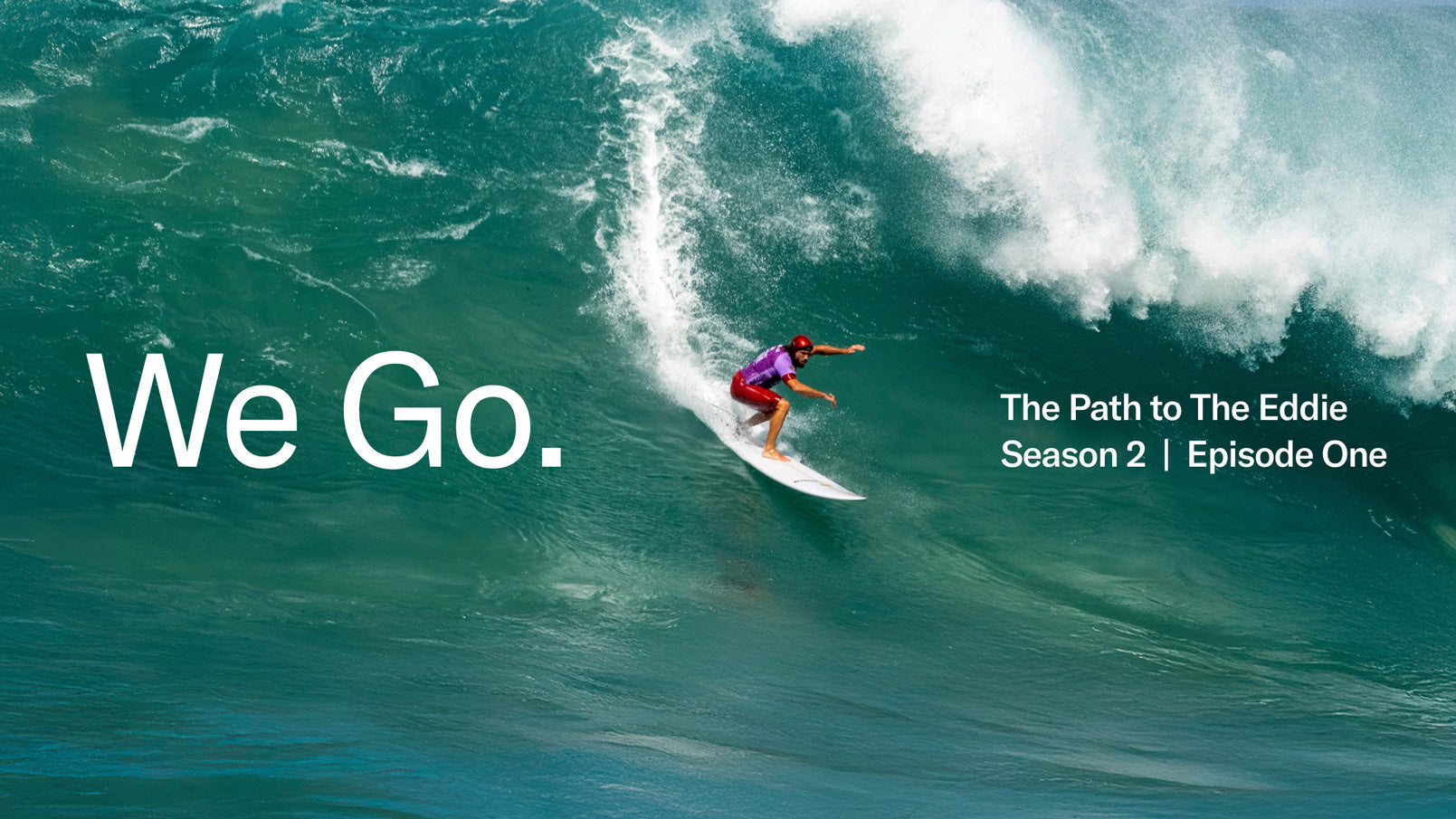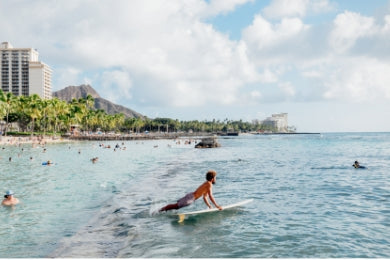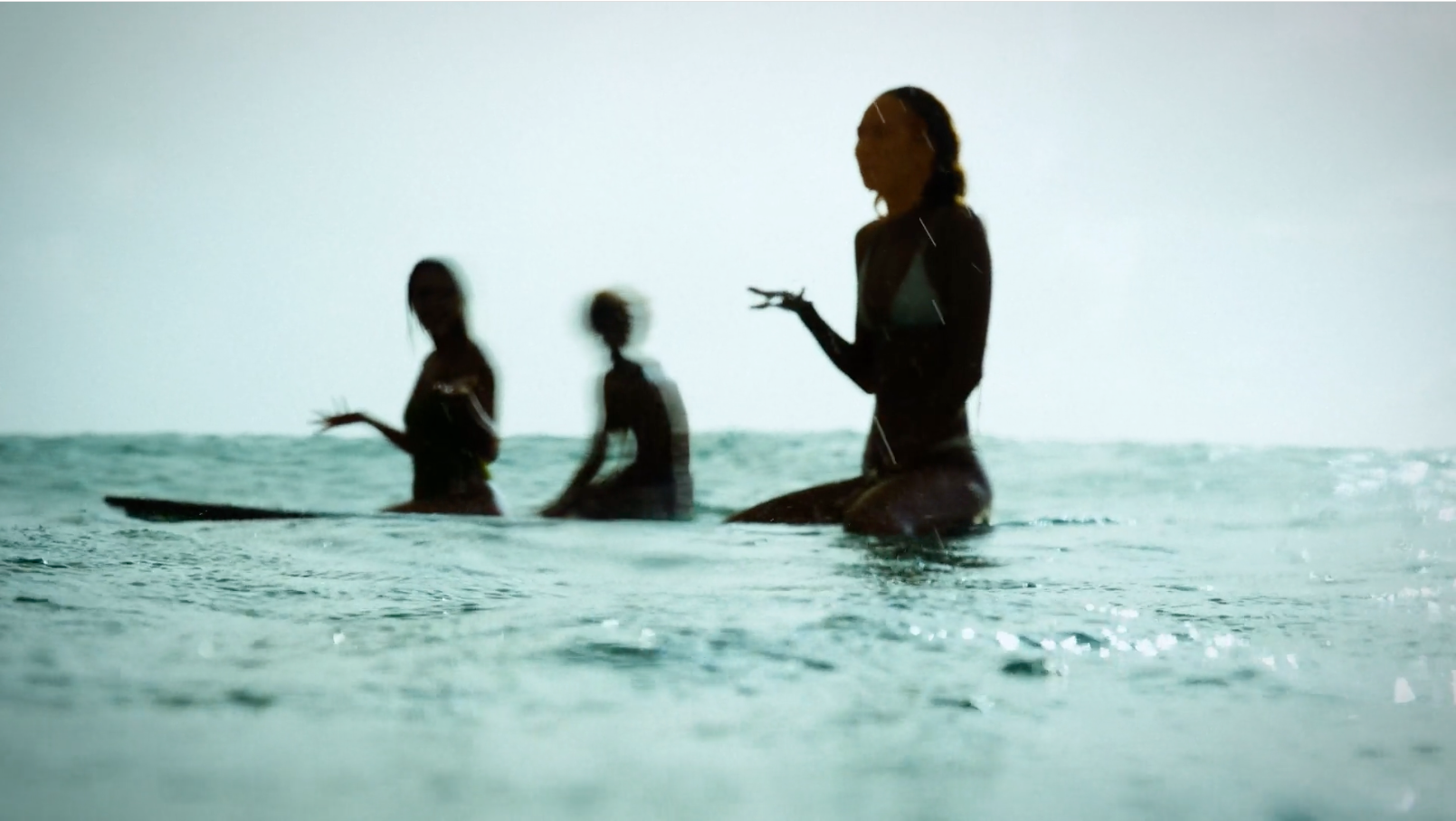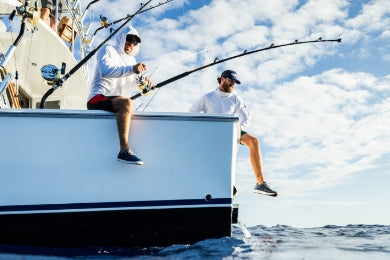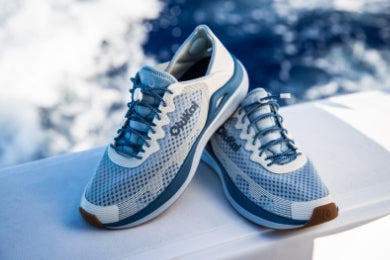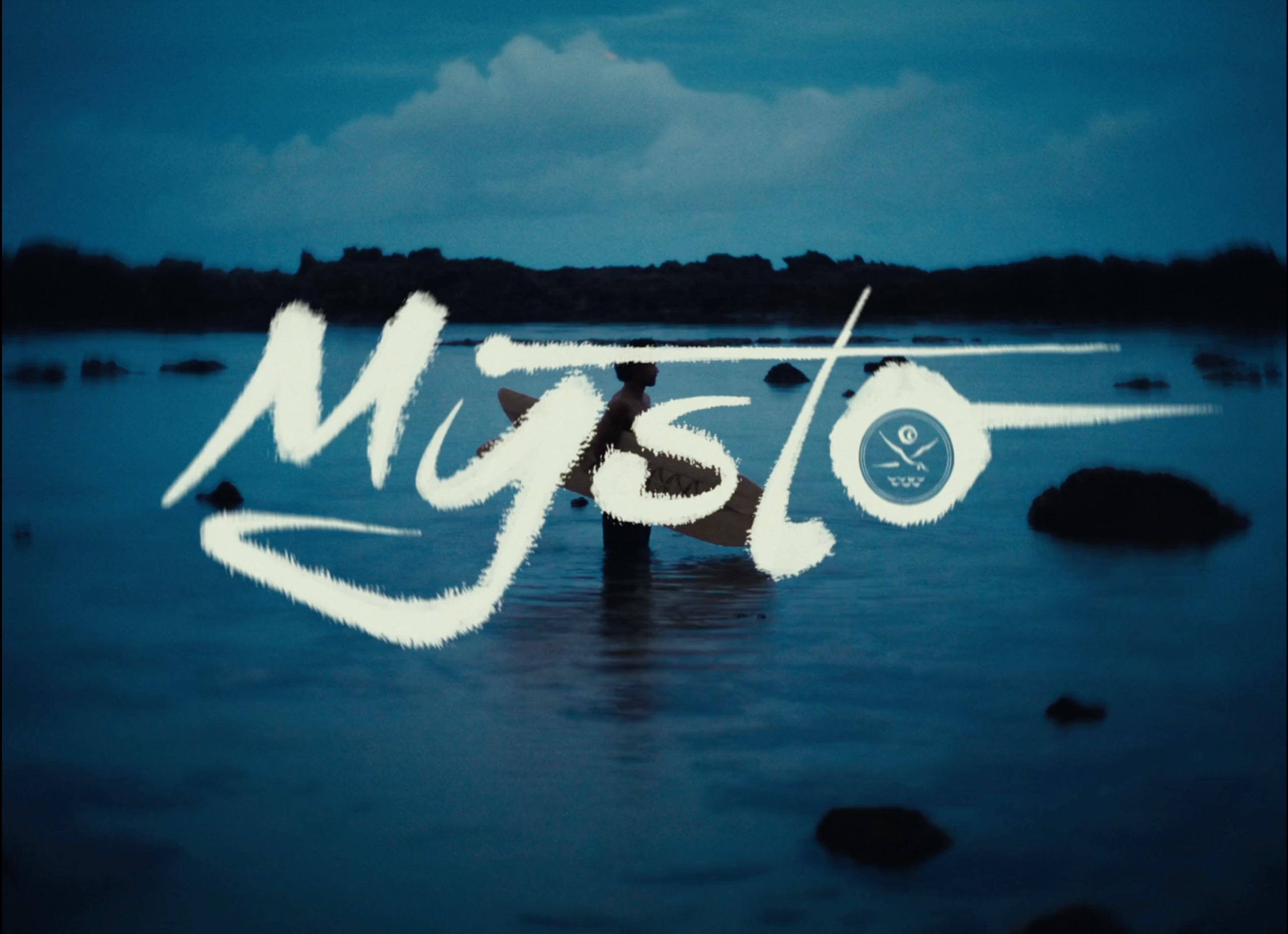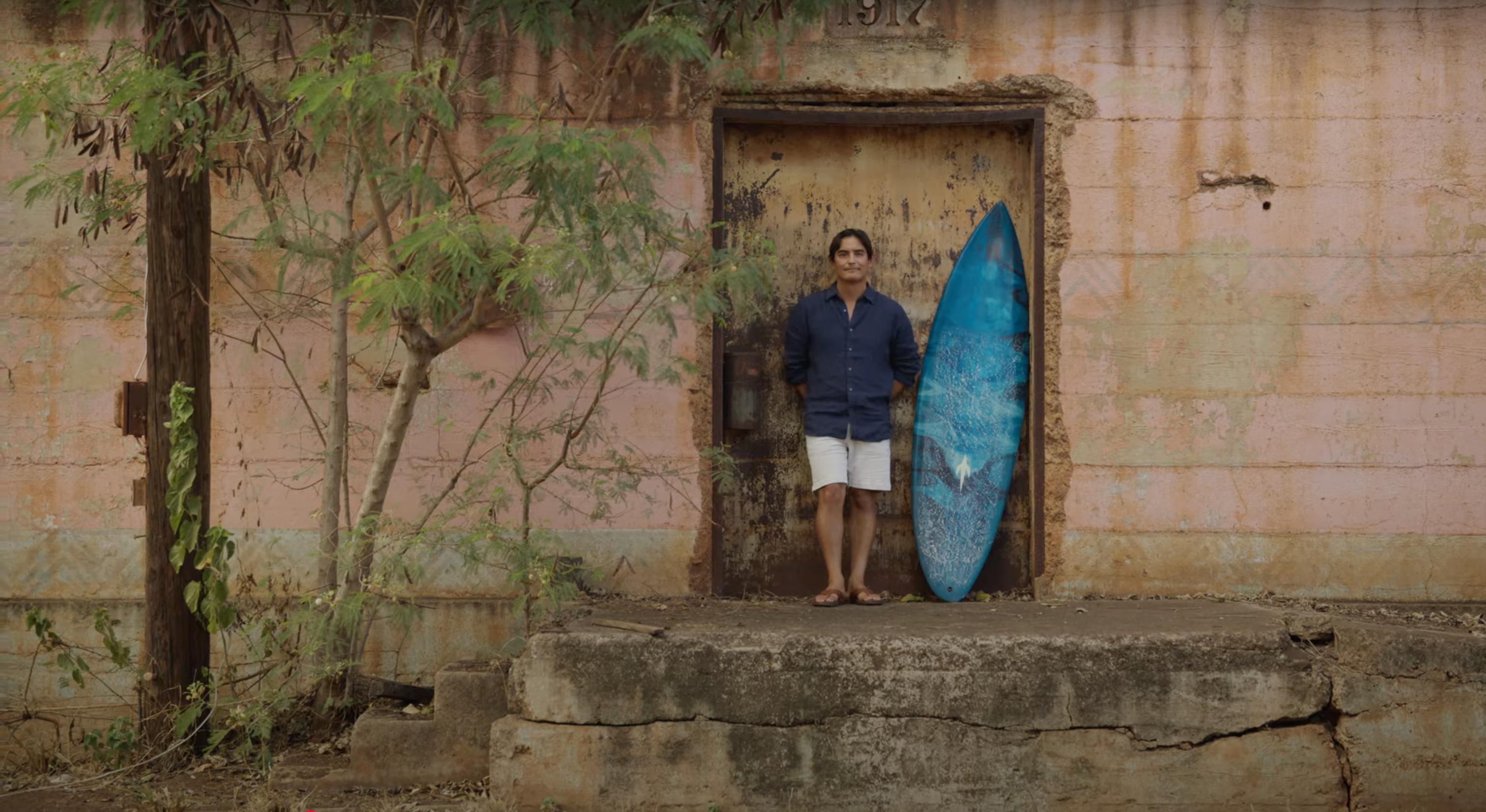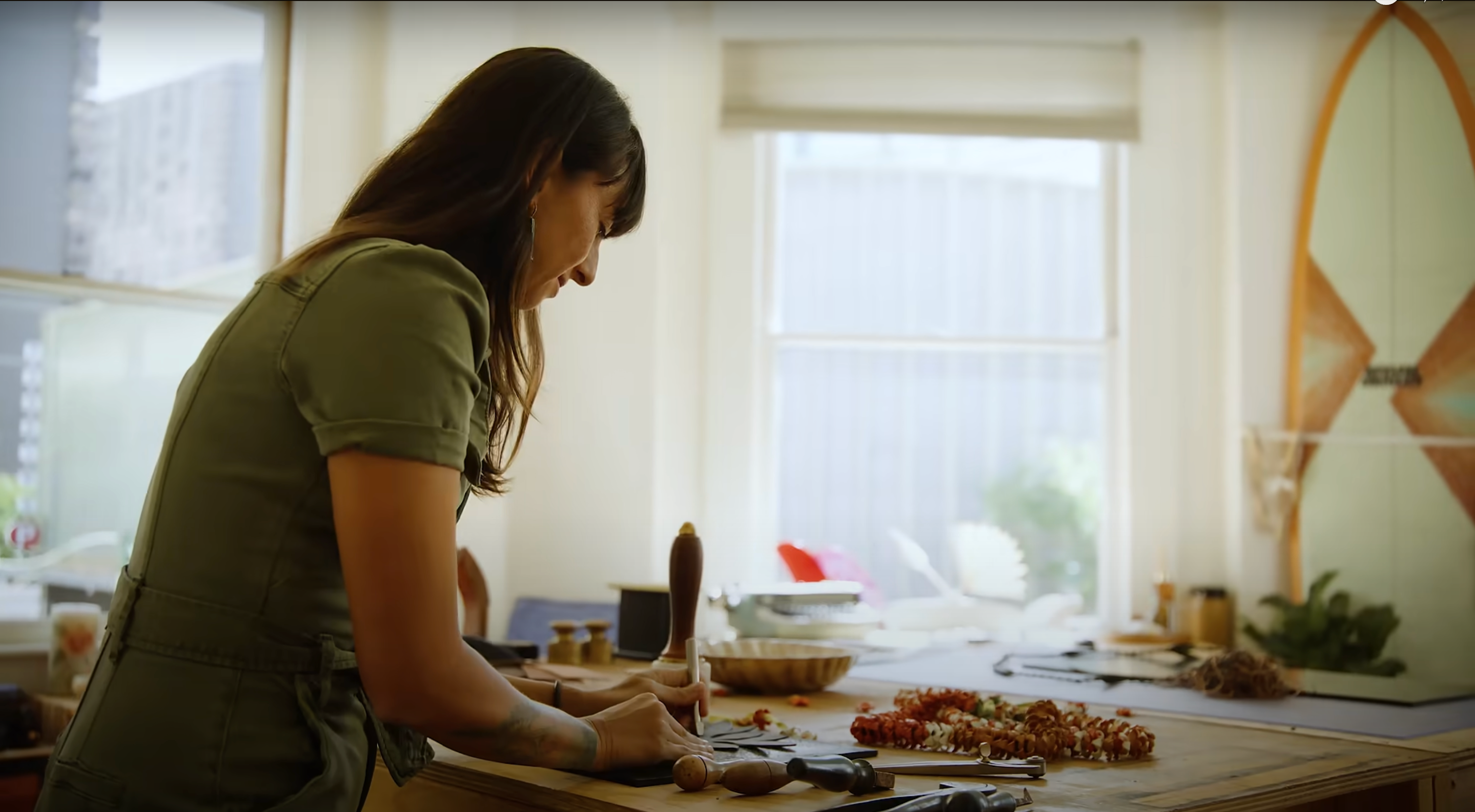 ©flickr/Rob Murray[/caption]
The mere mention of sharks gets the attention of anyone who plays in ocean waters. For one, sharks are fascinating and powerful creatures. For another, there is the concern about who’s for dinner. Sharks Cove, at the northern end of the Hawaiian island of O‘ahu, is one of the sweeter snorkeling spots on the island. It offers more protection from the wave action that disturbs the sand—affecting water clarity—at most of the open beaches. Located in the North Shore region, it is just five miles northeast of the town of Haleiwa (House of the Iwa, or frigate bird). While Sharks Cove is a popular place in and of itself, it is also near some of the world’s most spectacular big wave surfing competitions.
Hawaiian people take pride in their culture. Knowing the names and importance of its creatures is important. Sharks? Manō. They are revered among these islands, often as an ‘aumakua—an ancestor who has died and come back in another form. An ‘aumakua is often an owl, or a shark, in which case that family will never cause harm to any owl, or shark, depending on the ‘aumakua.
Sharks Cove is a popular spot for being in the water, but typically just from spring through early fall, when the water is fairly flat. Winter brings large swells, including waves up to twenty to fifty feet, sometimes higher, meaning there is little point in thinking about being in Sharks Cove waters. There is a good-sized rock breakwater protecting much of the Cove, but winter waves fly right over the top.
If you are driving up from Haleiwa, you will pass expansive Waimea Bay, then, within about half-a-mile, the Cove will be on your left. One helpful feature is the shopping “spot” across the street (on your right), containing a Foodland. Sharks Cove Grill, a well-established food truck, is also in sight.
Standing at the water’s edge, you will see what looks more like a tide pool to your left. To your right is where much of the snorkeling (or scuba) takes place. Once in the water, heading to the right, you have to carefully pick your way through the rocks (especially at low tide), but ultimately you gain access to the cavernous area. There you will see a wide variety of fish, sometimes schools, nearly always a honu (turtle) or two. I haven’t seen a shark there yet. We humans likely interfere with their peace and quiet. White-tipped reef sharks are what may have given Sharks Cove its name. They are generally not harmful to humans, being five feet or less in length. They may be seen on the ocean floor, being the one shark in Hawaiian waters that can remain in one spot and still breathe.
If you walk a few minutes in a southwesterly direction from Sharks Cove, you will come to Three Tables Beach, duly named because of the three, somewhat flat sections of coral reef that appear like tables at low tide. Try snorkeling there, where it can be about fifteen feet deep.
What about those winter waves? Wouldn’t you think the area would be deserted? No. In fact, just try to find parking in the area when one of the surf contests is in swing. Hawai‘i is known worldwide for its big wave surfing. http://www.alohasurfguide.com/events-contests/. Surfers fly in on a moment’s notice when the ever-unpredictable highest surf is in town—events like Vans Triple Crown, or the Quicksilver in Memory of Eddie Aikau, the mega-waves breaking the unsuspecting at the likes of Pipeline or Sunset Beach.
For your goggles, National Geographic mentions a plant that can prevent them from fogging. The oil helps. Check out the naupaka plant. The Hawai‘i Snorkeling Guide website above tells you where you can find naupaka at Sharks Cove.
If there is any sign of waves, just remember to never turn your back on Nāmaka (Nā-maka-o-Kahaʻi), the Goddess of the Sea who happens to be an older sister of Pele, Goddess of Volcanoes. They can both be rather “playful.” By the way, if you’re new to surfing and any of the waves look small, remember that thought next time a wave only head-high drops its load on you. A cubic meter of water weighs about 2,000 pounds!
©flickr/Rob Murray[/caption]
The mere mention of sharks gets the attention of anyone who plays in ocean waters. For one, sharks are fascinating and powerful creatures. For another, there is the concern about who’s for dinner. Sharks Cove, at the northern end of the Hawaiian island of O‘ahu, is one of the sweeter snorkeling spots on the island. It offers more protection from the wave action that disturbs the sand—affecting water clarity—at most of the open beaches. Located in the North Shore region, it is just five miles northeast of the town of Haleiwa (House of the Iwa, or frigate bird). While Sharks Cove is a popular place in and of itself, it is also near some of the world’s most spectacular big wave surfing competitions.
Hawaiian people take pride in their culture. Knowing the names and importance of its creatures is important. Sharks? Manō. They are revered among these islands, often as an ‘aumakua—an ancestor who has died and come back in another form. An ‘aumakua is often an owl, or a shark, in which case that family will never cause harm to any owl, or shark, depending on the ‘aumakua.
Sharks Cove is a popular spot for being in the water, but typically just from spring through early fall, when the water is fairly flat. Winter brings large swells, including waves up to twenty to fifty feet, sometimes higher, meaning there is little point in thinking about being in Sharks Cove waters. There is a good-sized rock breakwater protecting much of the Cove, but winter waves fly right over the top.
If you are driving up from Haleiwa, you will pass expansive Waimea Bay, then, within about half-a-mile, the Cove will be on your left. One helpful feature is the shopping “spot” across the street (on your right), containing a Foodland. Sharks Cove Grill, a well-established food truck, is also in sight.
Standing at the water’s edge, you will see what looks more like a tide pool to your left. To your right is where much of the snorkeling (or scuba) takes place. Once in the water, heading to the right, you have to carefully pick your way through the rocks (especially at low tide), but ultimately you gain access to the cavernous area. There you will see a wide variety of fish, sometimes schools, nearly always a honu (turtle) or two. I haven’t seen a shark there yet. We humans likely interfere with their peace and quiet. White-tipped reef sharks are what may have given Sharks Cove its name. They are generally not harmful to humans, being five feet or less in length. They may be seen on the ocean floor, being the one shark in Hawaiian waters that can remain in one spot and still breathe.
If you walk a few minutes in a southwesterly direction from Sharks Cove, you will come to Three Tables Beach, duly named because of the three, somewhat flat sections of coral reef that appear like tables at low tide. Try snorkeling there, where it can be about fifteen feet deep.
What about those winter waves? Wouldn’t you think the area would be deserted? No. In fact, just try to find parking in the area when one of the surf contests is in swing. Hawai‘i is known worldwide for its big wave surfing. http://www.alohasurfguide.com/events-contests/. Surfers fly in on a moment’s notice when the ever-unpredictable highest surf is in town—events like Vans Triple Crown, or the Quicksilver in Memory of Eddie Aikau, the mega-waves breaking the unsuspecting at the likes of Pipeline or Sunset Beach.
For your goggles, National Geographic mentions a plant that can prevent them from fogging. The oil helps. Check out the naupaka plant. The Hawai‘i Snorkeling Guide website above tells you where you can find naupaka at Sharks Cove.
If there is any sign of waves, just remember to never turn your back on Nāmaka (Nā-maka-o-Kahaʻi), the Goddess of the Sea who happens to be an older sister of Pele, Goddess of Volcanoes. They can both be rather “playful.” By the way, if you’re new to surfing and any of the waves look small, remember that thought next time a wave only head-high drops its load on you. A cubic meter of water weighs about 2,000 pounds!
Sharks Cove
[caption id="attachment_1464048" align="aligncenter" width="640"] ©flickr/Rob Murray[/caption]
The mere mention of sharks gets the attention of anyone who plays in ocean waters. For one, sharks are fascinating and powerful creatures. For another, there is the concern about who’s for dinner. Sharks Cove, at the northern end of the Hawaiian island of O‘ahu, is one of the sweeter snorkeling spots on the island. It offers more protection from the wave action that disturbs the sand—affecting water clarity—at most of the open beaches. Located in the North Shore region, it is just five miles northeast of the town of Haleiwa (House of the Iwa, or frigate bird). While Sharks Cove is a popular place in and of itself, it is also near some of the world’s most spectacular big wave surfing competitions.
Hawaiian people take pride in their culture. Knowing the names and importance of its creatures is important. Sharks? Manō. They are revered among these islands, often as an ‘aumakua—an ancestor who has died and come back in another form. An ‘aumakua is often an owl, or a shark, in which case that family will never cause harm to any owl, or shark, depending on the ‘aumakua.
Sharks Cove is a popular spot for being in the water, but typically just from spring through early fall, when the water is fairly flat. Winter brings large swells, including waves up to twenty to fifty feet, sometimes higher, meaning there is little point in thinking about being in Sharks Cove waters. There is a good-sized rock breakwater protecting much of the Cove, but winter waves fly right over the top.
If you are driving up from Haleiwa, you will pass expansive Waimea Bay, then, within about half-a-mile, the Cove will be on your left. One helpful feature is the shopping “spot” across the street (on your right), containing a Foodland. Sharks Cove Grill, a well-established food truck, is also in sight.
Standing at the water’s edge, you will see what looks more like a tide pool to your left. To your right is where much of the snorkeling (or scuba) takes place. Once in the water, heading to the right, you have to carefully pick your way through the rocks (especially at low tide), but ultimately you gain access to the cavernous area. There you will see a wide variety of fish, sometimes schools, nearly always a honu (turtle) or two. I haven’t seen a shark there yet. We humans likely interfere with their peace and quiet. White-tipped reef sharks are what may have given Sharks Cove its name. They are generally not harmful to humans, being five feet or less in length. They may be seen on the ocean floor, being the one shark in Hawaiian waters that can remain in one spot and still breathe.
If you walk a few minutes in a southwesterly direction from Sharks Cove, you will come to Three Tables Beach, duly named because of the three, somewhat flat sections of coral reef that appear like tables at low tide. Try snorkeling there, where it can be about fifteen feet deep.
What about those winter waves? Wouldn’t you think the area would be deserted? No. In fact, just try to find parking in the area when one of the surf contests is in swing. Hawai‘i is known worldwide for its big wave surfing. http://www.alohasurfguide.com/events-contests/. Surfers fly in on a moment’s notice when the ever-unpredictable highest surf is in town—events like Vans Triple Crown, or the Quicksilver in Memory of Eddie Aikau, the mega-waves breaking the unsuspecting at the likes of Pipeline or Sunset Beach.
For your goggles, National Geographic mentions a plant that can prevent them from fogging. The oil helps. Check out the naupaka plant. The Hawai‘i Snorkeling Guide website above tells you where you can find naupaka at Sharks Cove.
If there is any sign of waves, just remember to never turn your back on Nāmaka (Nā-maka-o-Kahaʻi), the Goddess of the Sea who happens to be an older sister of Pele, Goddess of Volcanoes. They can both be rather “playful.” By the way, if you’re new to surfing and any of the waves look small, remember that thought next time a wave only head-high drops its load on you. A cubic meter of water weighs about 2,000 pounds!
©flickr/Rob Murray[/caption]
The mere mention of sharks gets the attention of anyone who plays in ocean waters. For one, sharks are fascinating and powerful creatures. For another, there is the concern about who’s for dinner. Sharks Cove, at the northern end of the Hawaiian island of O‘ahu, is one of the sweeter snorkeling spots on the island. It offers more protection from the wave action that disturbs the sand—affecting water clarity—at most of the open beaches. Located in the North Shore region, it is just five miles northeast of the town of Haleiwa (House of the Iwa, or frigate bird). While Sharks Cove is a popular place in and of itself, it is also near some of the world’s most spectacular big wave surfing competitions.
Hawaiian people take pride in their culture. Knowing the names and importance of its creatures is important. Sharks? Manō. They are revered among these islands, often as an ‘aumakua—an ancestor who has died and come back in another form. An ‘aumakua is often an owl, or a shark, in which case that family will never cause harm to any owl, or shark, depending on the ‘aumakua.
Sharks Cove is a popular spot for being in the water, but typically just from spring through early fall, when the water is fairly flat. Winter brings large swells, including waves up to twenty to fifty feet, sometimes higher, meaning there is little point in thinking about being in Sharks Cove waters. There is a good-sized rock breakwater protecting much of the Cove, but winter waves fly right over the top.
If you are driving up from Haleiwa, you will pass expansive Waimea Bay, then, within about half-a-mile, the Cove will be on your left. One helpful feature is the shopping “spot” across the street (on your right), containing a Foodland. Sharks Cove Grill, a well-established food truck, is also in sight.
Standing at the water’s edge, you will see what looks more like a tide pool to your left. To your right is where much of the snorkeling (or scuba) takes place. Once in the water, heading to the right, you have to carefully pick your way through the rocks (especially at low tide), but ultimately you gain access to the cavernous area. There you will see a wide variety of fish, sometimes schools, nearly always a honu (turtle) or two. I haven’t seen a shark there yet. We humans likely interfere with their peace and quiet. White-tipped reef sharks are what may have given Sharks Cove its name. They are generally not harmful to humans, being five feet or less in length. They may be seen on the ocean floor, being the one shark in Hawaiian waters that can remain in one spot and still breathe.
If you walk a few minutes in a southwesterly direction from Sharks Cove, you will come to Three Tables Beach, duly named because of the three, somewhat flat sections of coral reef that appear like tables at low tide. Try snorkeling there, where it can be about fifteen feet deep.
What about those winter waves? Wouldn’t you think the area would be deserted? No. In fact, just try to find parking in the area when one of the surf contests is in swing. Hawai‘i is known worldwide for its big wave surfing. http://www.alohasurfguide.com/events-contests/. Surfers fly in on a moment’s notice when the ever-unpredictable highest surf is in town—events like Vans Triple Crown, or the Quicksilver in Memory of Eddie Aikau, the mega-waves breaking the unsuspecting at the likes of Pipeline or Sunset Beach.
For your goggles, National Geographic mentions a plant that can prevent them from fogging. The oil helps. Check out the naupaka plant. The Hawai‘i Snorkeling Guide website above tells you where you can find naupaka at Sharks Cove.
If there is any sign of waves, just remember to never turn your back on Nāmaka (Nā-maka-o-Kahaʻi), the Goddess of the Sea who happens to be an older sister of Pele, Goddess of Volcanoes. They can both be rather “playful.” By the way, if you’re new to surfing and any of the waves look small, remember that thought next time a wave only head-high drops its load on you. A cubic meter of water weighs about 2,000 pounds!
 ©flickr/Rob Murray[/caption]
The mere mention of sharks gets the attention of anyone who plays in ocean waters. For one, sharks are fascinating and powerful creatures. For another, there is the concern about who’s for dinner. Sharks Cove, at the northern end of the Hawaiian island of O‘ahu, is one of the sweeter snorkeling spots on the island. It offers more protection from the wave action that disturbs the sand—affecting water clarity—at most of the open beaches. Located in the North Shore region, it is just five miles northeast of the town of Haleiwa (House of the Iwa, or frigate bird). While Sharks Cove is a popular place in and of itself, it is also near some of the world’s most spectacular big wave surfing competitions.
Hawaiian people take pride in their culture. Knowing the names and importance of its creatures is important. Sharks? Manō. They are revered among these islands, often as an ‘aumakua—an ancestor who has died and come back in another form. An ‘aumakua is often an owl, or a shark, in which case that family will never cause harm to any owl, or shark, depending on the ‘aumakua.
Sharks Cove is a popular spot for being in the water, but typically just from spring through early fall, when the water is fairly flat. Winter brings large swells, including waves up to twenty to fifty feet, sometimes higher, meaning there is little point in thinking about being in Sharks Cove waters. There is a good-sized rock breakwater protecting much of the Cove, but winter waves fly right over the top.
If you are driving up from Haleiwa, you will pass expansive Waimea Bay, then, within about half-a-mile, the Cove will be on your left. One helpful feature is the shopping “spot” across the street (on your right), containing a Foodland. Sharks Cove Grill, a well-established food truck, is also in sight.
Standing at the water’s edge, you will see what looks more like a tide pool to your left. To your right is where much of the snorkeling (or scuba) takes place. Once in the water, heading to the right, you have to carefully pick your way through the rocks (especially at low tide), but ultimately you gain access to the cavernous area. There you will see a wide variety of fish, sometimes schools, nearly always a honu (turtle) or two. I haven’t seen a shark there yet. We humans likely interfere with their peace and quiet. White-tipped reef sharks are what may have given Sharks Cove its name. They are generally not harmful to humans, being five feet or less in length. They may be seen on the ocean floor, being the one shark in Hawaiian waters that can remain in one spot and still breathe.
If you walk a few minutes in a southwesterly direction from Sharks Cove, you will come to Three Tables Beach, duly named because of the three, somewhat flat sections of coral reef that appear like tables at low tide. Try snorkeling there, where it can be about fifteen feet deep.
What about those winter waves? Wouldn’t you think the area would be deserted? No. In fact, just try to find parking in the area when one of the surf contests is in swing. Hawai‘i is known worldwide for its big wave surfing. http://www.alohasurfguide.com/events-contests/. Surfers fly in on a moment’s notice when the ever-unpredictable highest surf is in town—events like Vans Triple Crown, or the Quicksilver in Memory of Eddie Aikau, the mega-waves breaking the unsuspecting at the likes of Pipeline or Sunset Beach.
For your goggles, National Geographic mentions a plant that can prevent them from fogging. The oil helps. Check out the naupaka plant. The Hawai‘i Snorkeling Guide website above tells you where you can find naupaka at Sharks Cove.
If there is any sign of waves, just remember to never turn your back on Nāmaka (Nā-maka-o-Kahaʻi), the Goddess of the Sea who happens to be an older sister of Pele, Goddess of Volcanoes. They can both be rather “playful.” By the way, if you’re new to surfing and any of the waves look small, remember that thought next time a wave only head-high drops its load on you. A cubic meter of water weighs about 2,000 pounds!
©flickr/Rob Murray[/caption]
The mere mention of sharks gets the attention of anyone who plays in ocean waters. For one, sharks are fascinating and powerful creatures. For another, there is the concern about who’s for dinner. Sharks Cove, at the northern end of the Hawaiian island of O‘ahu, is one of the sweeter snorkeling spots on the island. It offers more protection from the wave action that disturbs the sand—affecting water clarity—at most of the open beaches. Located in the North Shore region, it is just five miles northeast of the town of Haleiwa (House of the Iwa, or frigate bird). While Sharks Cove is a popular place in and of itself, it is also near some of the world’s most spectacular big wave surfing competitions.
Hawaiian people take pride in their culture. Knowing the names and importance of its creatures is important. Sharks? Manō. They are revered among these islands, often as an ‘aumakua—an ancestor who has died and come back in another form. An ‘aumakua is often an owl, or a shark, in which case that family will never cause harm to any owl, or shark, depending on the ‘aumakua.
Sharks Cove is a popular spot for being in the water, but typically just from spring through early fall, when the water is fairly flat. Winter brings large swells, including waves up to twenty to fifty feet, sometimes higher, meaning there is little point in thinking about being in Sharks Cove waters. There is a good-sized rock breakwater protecting much of the Cove, but winter waves fly right over the top.
If you are driving up from Haleiwa, you will pass expansive Waimea Bay, then, within about half-a-mile, the Cove will be on your left. One helpful feature is the shopping “spot” across the street (on your right), containing a Foodland. Sharks Cove Grill, a well-established food truck, is also in sight.
Standing at the water’s edge, you will see what looks more like a tide pool to your left. To your right is where much of the snorkeling (or scuba) takes place. Once in the water, heading to the right, you have to carefully pick your way through the rocks (especially at low tide), but ultimately you gain access to the cavernous area. There you will see a wide variety of fish, sometimes schools, nearly always a honu (turtle) or two. I haven’t seen a shark there yet. We humans likely interfere with their peace and quiet. White-tipped reef sharks are what may have given Sharks Cove its name. They are generally not harmful to humans, being five feet or less in length. They may be seen on the ocean floor, being the one shark in Hawaiian waters that can remain in one spot and still breathe.
If you walk a few minutes in a southwesterly direction from Sharks Cove, you will come to Three Tables Beach, duly named because of the three, somewhat flat sections of coral reef that appear like tables at low tide. Try snorkeling there, where it can be about fifteen feet deep.
What about those winter waves? Wouldn’t you think the area would be deserted? No. In fact, just try to find parking in the area when one of the surf contests is in swing. Hawai‘i is known worldwide for its big wave surfing. http://www.alohasurfguide.com/events-contests/. Surfers fly in on a moment’s notice when the ever-unpredictable highest surf is in town—events like Vans Triple Crown, or the Quicksilver in Memory of Eddie Aikau, the mega-waves breaking the unsuspecting at the likes of Pipeline or Sunset Beach.
For your goggles, National Geographic mentions a plant that can prevent them from fogging. The oil helps. Check out the naupaka plant. The Hawai‘i Snorkeling Guide website above tells you where you can find naupaka at Sharks Cove.
If there is any sign of waves, just remember to never turn your back on Nāmaka (Nā-maka-o-Kahaʻi), the Goddess of the Sea who happens to be an older sister of Pele, Goddess of Volcanoes. They can both be rather “playful.” By the way, if you’re new to surfing and any of the waves look small, remember that thought next time a wave only head-high drops its load on you. A cubic meter of water weighs about 2,000 pounds!
